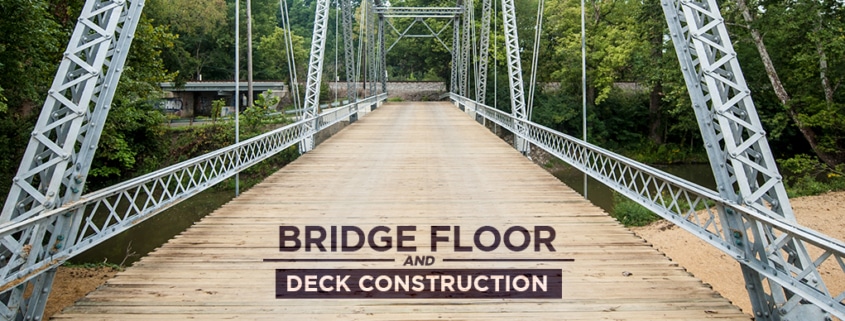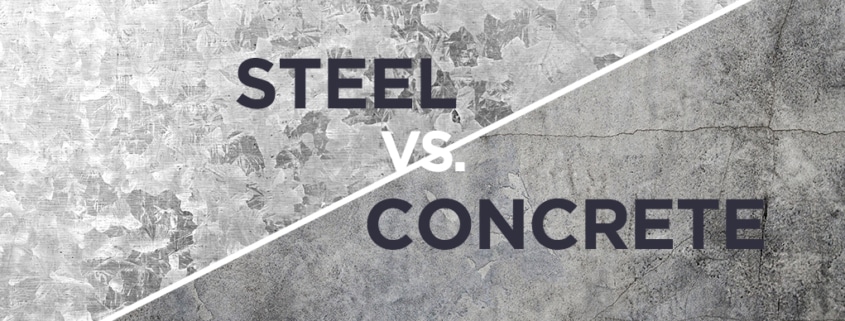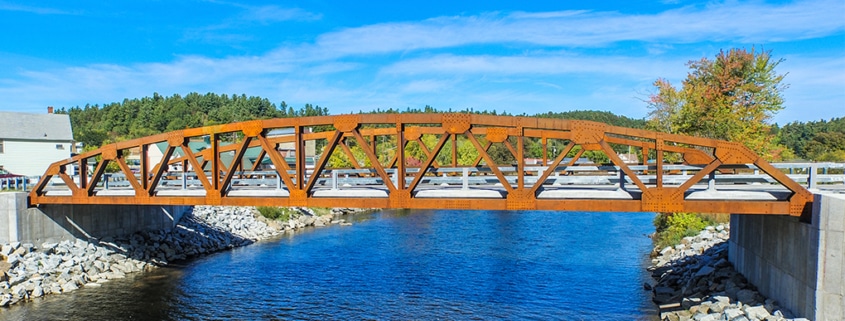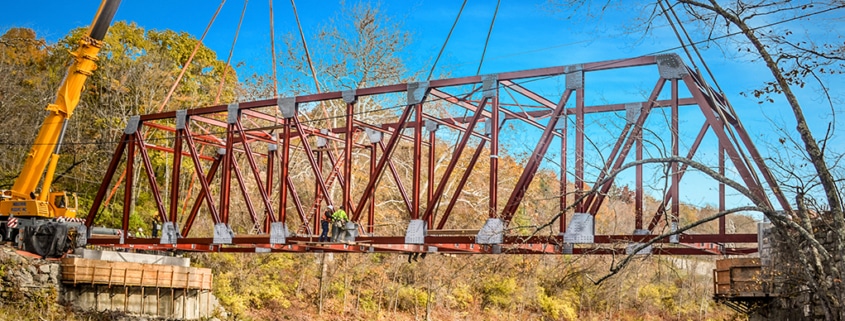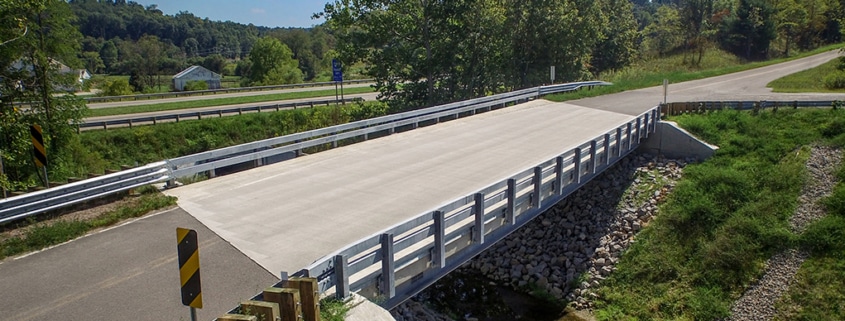Analyzing the life cycle costs of steel vs. concrete bridges is of utmost importance to U.S. Bridge and the infrastructure industry in general. Aside from sustainability and social responsibility, U.S. Bridge is dedicated to using the best materials for the job. Depending on the scope of work and bridge design, the choice between steel or concrete could have a long-lasting impact on the sustainability of the structure.
U.S. Bridge asked Michael G. Barker Ph.D., a professor at the University of Wyoming, to draft a white paper regarding the Life Cycle Costs Analysis (LCCA) of bridges. Of particular interest was the use of hot-dip galvanized steel vs. concrete. The study determined that using HDG steel reduces capital costs by 8.5 percent. Below is the executive summary of the report that provides a good snapshot of the report and its findings. You can download the entire white paper here.
Executive Summary
Since the early 1990s, the Federal Highway Administration (FHWA) has promoted the consideration of Life Cycle Costs Analysis (LCCA) in the design and engineering of bridges. LCCA determines the “true cost” of bridge alternatives considering the time-value of money. The Life Cycle Cost analyses employed in this study uses the Perpetual Present Value Cost (PPVC) of bridge alternatives for an equivalent comparison between the alternatives.
Over the years, the author has worked with state departments of transportation and local county engineers on effective and economical bridge construction. A frequent question that arises during meetings is the difference in Life Cycle Costs between steel and concrete girder bridges. Both the concrete industry and the steel industry cite various anecdotal advantages above the other for the Life Cycle Costs over the life of the bridge. There has historically been a healthy competition between material types for new bridge construction. However, there is industry and owner confusion on how the different types of bridges compare on a Life Cycle Cost basis.
Steel vs. Concrete Bridge Analysis
This study developed useful owner information on historical Life Cycle Costs for typical steel and concrete state bridges in Pennsylvania. Typical bridges defined in the study are:
- Concrete decks supported by steel rolled beams
- Steel plate girders
- Precast concrete boxes
- Precast concrete beams
PennDOT historical records for bridges built between 1960 and 2010 were used to develop the Life Cycle Cost study database. Initial and maintenance costs considered include total project costs (more than just superstructure) as recorded in the PennDOT records. The PennDOT database used for the Life Cycle Cost analyses only includes a subset of the total bridge inventory. Missing cost and date data for a majority of the individual bridges made total inventory impossible. The database consists of 1,186 state bridges out of 6,587 (18 percent of the eligible inventory) built between 1960 and 2010.
The initial costs, Life Cycle Costs, and future costs of the 1,186 bridges in the database are examined with respect to:
- Variability in bridge type
- Bridge length
- Number of spans
- Bridge life
Protective coating systems were also used to examine steel bridges. The results must be taken into context since the results only represent the bridges that made it into the database. The database is not as comprehensive or desirable for drawing conclusions. The reader must decide how to interpret the tables and figures showing comparisons of initial costs, Perpetual Present Value Costs, maintenance and future costs, and bridge life.
Report Conclusion Summary
A conclusion that can be drawn is that all the types of bridges are fairly competitive in both Initial Costs and Perpetual Present Value Costs. The average initial costs vary from $174 per square feet to $226 square feet. The average Perpetual Present Value Costs vary between $218 per square feet (Prestressed I Beam) and $278 per square feet (Prestressed Adjacent Box). The lowest average bridge life was 73 years (Prestressed I Beam) and the longest was 82 years (Steel I Beam). The coefficient of variation (standard deviation/mean) of the PPVC was approximately 20 percent, which is considerably high. With the relatively small differences in the PPVC averages, given the dispersion of the PPVC costs (standard deviation), any of the bridge types may have the least Perpetual Present Value Cost for a given project.
Chance for Further Study
This research was limited to a subset of PennDOT bridges. However, the analyses demonstrate the potential benefits of LCC analysis for bridge construction and management. A study of a more comprehensive database of bridges on the initial costs, Life Cycle Costs and future costs of different types of bridges over a diverse set of circumstances would be very useful for bridge owners and managers. A more comprehensive database would allow for a more accurate comparison of bridge types, design details, such as jointless decks, rebar coatings, steel protection systems, and other construction details.
For more information about this study, as well as the benefits of steel vs. concrete bridges, please contact U.S. Bridge today. You can also download the complete white paper here.


